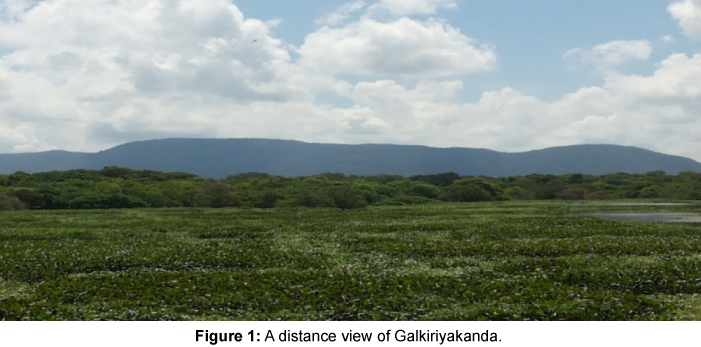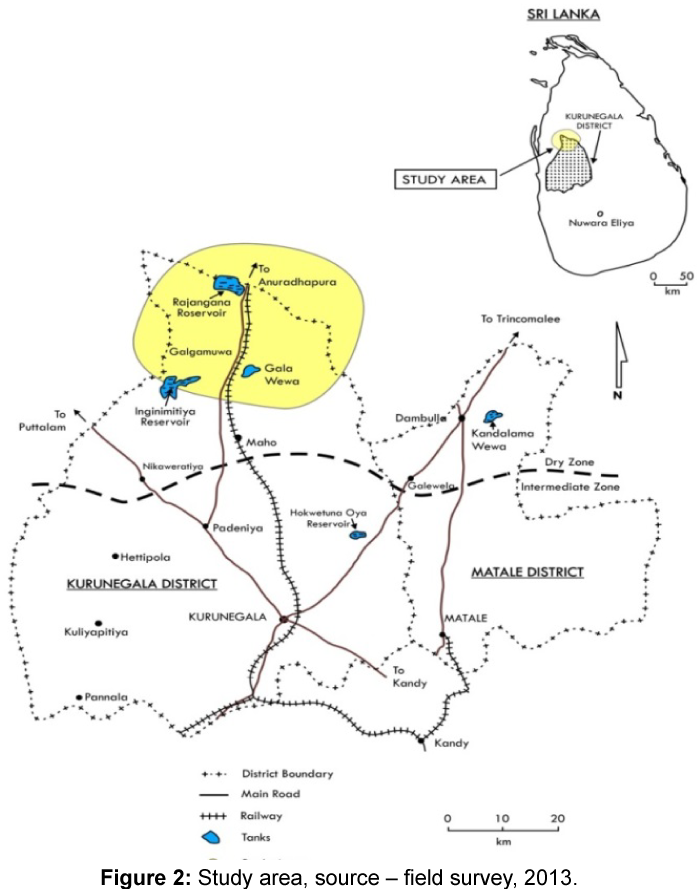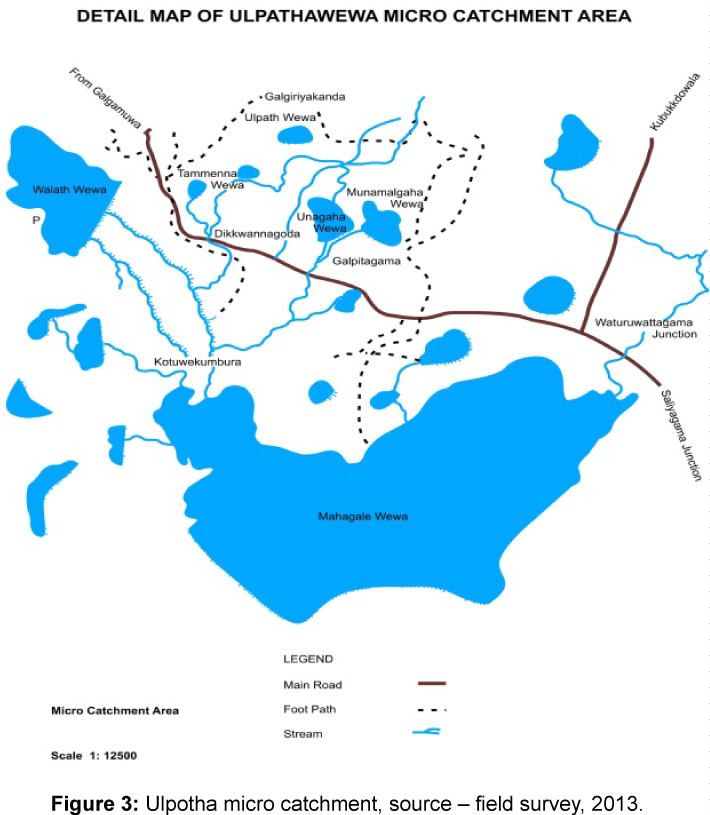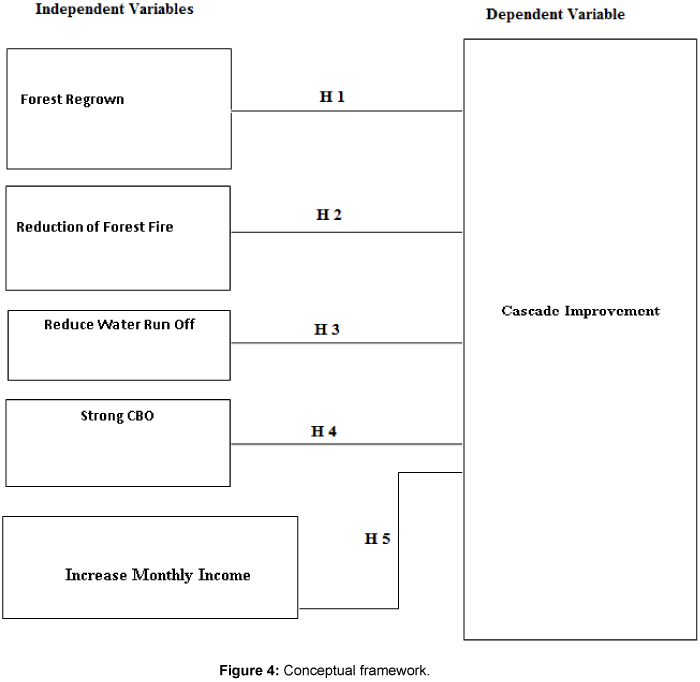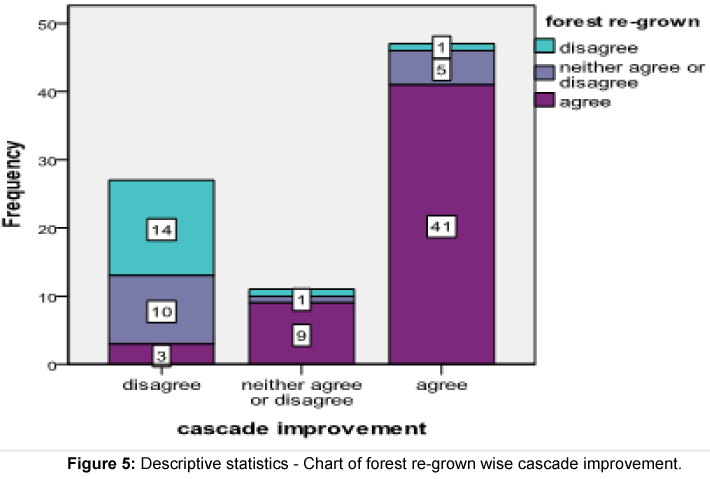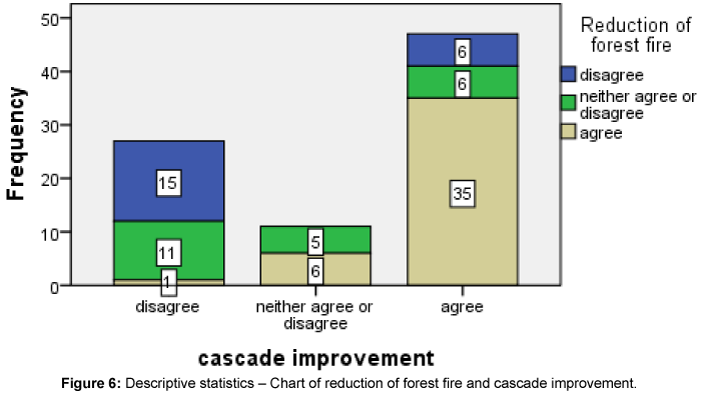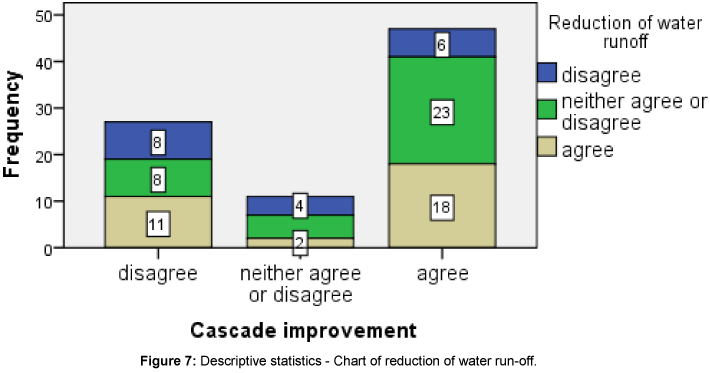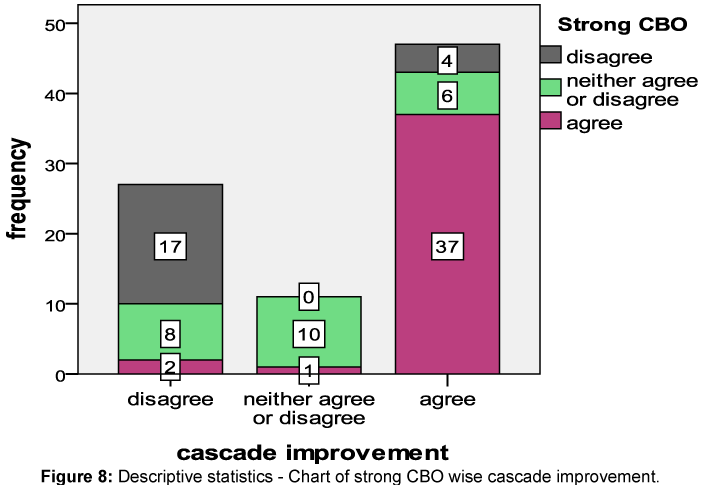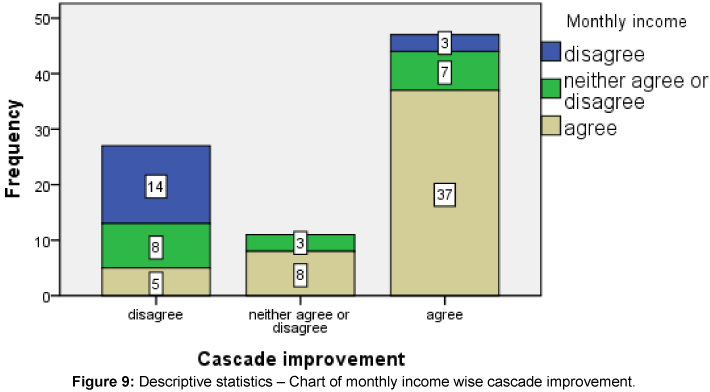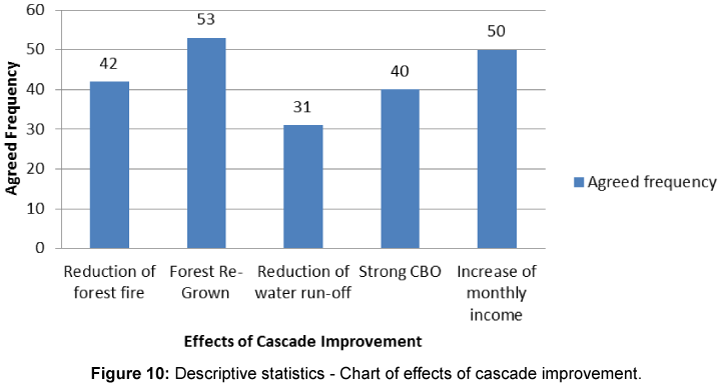Research Article Open Access
Impacts of Ulpotha Micro-cascade Restoration in Galkiriyakanda Mesocascade
Dunstan J Fernando*Australian High Commission, Colombo, Sri Lanka
- *Corresponding Author:
- Fernando DJ
Australian High Commission, Colombo, Sri Lanka
Tel: 00 94 77 302 10 95
E-mail: Dun_fernando@yahoo.com
Received April 29, 2016; Accepted May 31, 2016; Published June 08, 2016
Citation: Fernando DJ (2016) Impacts of Ulpotha Micro-cascade Restoration in Galkiriyakanda Meso-cascade. J Ecosys Ecograph 6:191. doi:10.4172/2157- 7625.1000191
Copyright: ©2016 Fernando DJ. This is an open-access article distributed under the terms of the Creative Commons Attribution License, which permits unrestricted use, distribution, and reproduction in any medium, provided the original author and source are credited.
Visit for more related articles at Journal of Ecosystem & Ecography
Abstract
The main purpose of this article is to study the viability of Ulpotha micro-cascade rehabilitation under Sri Lanka Australia Natural Resource Management Project (SLANRMP). Rehabilitation of Ulpotha with its natural resources was started on pilot basis in 2004 and completed in the year 2010. It is opportune to study the impacts of Ulpotha rehabilitation with its natural resources. Case study methodology was used for this study and the impacts were analysed by using Statistical Package for the Social Sciences (SPSS) system. A Likert scale questionnaire was used to collect required information and data for the study. The research commenced in 2013 and more positive impacts of the Ulpotha rehabilitation were noted during the study.
Keywords
Cascade; Micro-cascade; Hypothesis; Degradation; Variables; Conceptual framework
Introduction
Galkiriyakanda cascade is located in Kurunegala District of North Western Province of Sri Lanka. The Galkiriyakanda is also situated close to the southern boundary of Anuradhapura district (7°C 50’ -8°C 00 North 8°C 20’ East) and in the northern part of Kurunegala district. In terms of local administrative boundaries, the Galkiriyakanda cascade is extended to Ehetuwewa and Polpithigama Divisional Secretariat Divisions. Galkiriyakanda is also a meso-cascade or a catchment due to its geotechnical features [1]. This cascade covers more than 1,100 hectares in the vicinity. Under this meso-catchment, a number of micro-cascades (catchments) are visible. Among them “Ulpotha micro cascade” has been selected for this study due to its importance with more than 50 micro tanks (Figure 1).
Ulpotha micro-cascade
The Ulpotha micro-cascade has a high biological importance not only for the local area and people, but also for the entire country. There are a total of 447 households around this micro-cascade. Most of these households depend on farming on smallholder basis as a major livelihood [2]. A significant portion of the households that earn a livelihood from agriculture are irrigated paddy farmers and much dependant on water sources of cascade. Cascade also fulfils many functions as being the source of water for drinking by people and household animals, wild animals, bathing and washing, homegardening and cultivation.
Ulpotha micro-cascade enriches nearly 56 tanks in the downstream (Figure 2). All drainage flow water end in the middle size reservoir called ‘Maha Gala Wewa’ and then flows to the Mee Oya. The significant features of this micro-cascade are:
Water Storage is being done by micro-tanks (Kuluwewas) in the cascade.
Micro Tanks are being used for paddy cultivation and other crops in Maha season.
Chena cultivation also practices during the Maha season.
Small tanks will not hold sufficient water for Yala cultivation.
During Yala season, communities engage in paddy cultivation under the Maha Gala Wewa. Farmers do not cultivate any crops under this tank in Maha season and keep water or yala (season) cultivation.
Background of Sri Lanka, Australia natural resource management project (SLANRMP)
Empirical evidence for cascade management and its livelihood implications that is analysed in this article comes from a project implemented by Sri Lanka Forestry Department (FD) with technical and financial assistance from Australian Aid. The project, namely Sri Lanka Australia Natural Resource Management Project (SLANRMP), that was implemented as a pilot project had its own goals, objectives and components.
Its overall objective was to contribute to poverty reduction through improved natural resource management in the dry and intermediate zone communities in Galkiriyakanda cascades. Its overall purpose was to assist the Government of Sri Lanka (GOSL) and grassroots level agencies connected to natural resource management in order to develop and implement policy, legislation and practices to involve local communities in the participatory management of dry and intermediate zone forests and other natural resources [3].
Of the two (2) components, Participatory Natural Resource Management was the first component. Objective of this component was to test, develop and implement processes for the community management of natural resources that equitably improve livelihoods and reduce poverty of rural households in the dry and intermediate zones.
The second component was the Institutional Support for Integrated Natural Resource Management and its objective was to improve the capacity of the Forest Department and other service providers to implement participatory resource management programs that improve utilisation, encourage coordination mechanisms and ensure integration of service providers.
Objectives of the Study
Main objectives of this study could be categorised as general and specific. Initially, the whole area or big picture of the selected topic covered by the general objective and general it is overarching entire scope of the study.
General objective
The main objective of this article is to identify and analyse impacts of restoration of Ulpotha Micro-cascade on environment and rural livelihood [4]. Accordingly, this article will study, profile and analyse the impacts of restoration efforts by SLANRMP in Ulpotha microcascade located within Galkiriyakanda meso-cascade on environment and rural livelihood.
Specific objectives
The key specific objectives of this study are to asses changes in:
Cascade resource improvements (e.g. forest, water storage etc.)
Forest fire (reduction of forest fire);
Livelihood opportunities;
Community involvement in cascade rehabilitation; and
Socio-economic improvement of target group;
Methodological Overview
Case study is an appropriate methodology to do a holistic and in-depth investigation in an identified issue. In order to do this, two downstream villages (namely IhalaThimbiriyawa and Walathwewa) in the Ulpotha micro-cascade have been selected as sample villages. Improvements done in Ulpotha cascade and its impacts on environment and rural livelihoods in two selected villages were the main areas to concentrate during the field survey.
The methodology selected in the case study comprised of extensive participatory field surveys (e.g. PRAs, focus group discussions, transect walks, SWOT analysis and seasonal Calenders etc.) to avoid weaknesses and bias. Above mentioned participatory tools were helpful to consolidate findings of the survey [5]. In addition, a number of meetings have been conducted with key stakeholders to test survey tools (including Likert Scale Questionnaire - Please refer Annex 1) and to measure the impacts and community acceptability of cascade restoration and its impacts.
The Statistical package for the social sciences (SPSS)
The Statistical Package for the Social Sciences (SPSS) has been used to collect and analyse data for this survey as it provides many benefits. For instance, SPSS system is allow for more advanced analysis than regular spread sheets and Excel programs. SPSS is also offers a number of ways in analysing statistical data, preparing charts and graphs (Figure 3).
Likert scale questionnaire
Community responses on changes have been measured through a Likert Scale Questionnaire. On a Likert scale questionnaire, respondents specify their level of agreement or disagreement for a series of questions. It is considered symmetric or balanced as there are equal numbers of positive and negative positions [6]. Likert scale generally range from 2 to 10. But 1 to 5 is the range selected for this survey. As none rejected any question, the response rate for the questionnaire was 100%.
Research problem
The main research problem addressed in this dissertation is how improvements or changes in a cascade area as an ecological unit affect the livelihoods of cascade dependent communities.
Research questions
· Extent to which degraded cascades are amenable for improvements?
· What major environmental benefits are accrued to cascade improvement?
· What connections are there between cascade and livelihood of cascade dependent rural communities?
Hypothesis to Test Project Outcomes
Five (5) alternative hypotheses have been developed to test the impacts of Ulpotha restoration. The alternative hypotheses are the alternative to the null hypotheses needs to be tested through various parties. The hypotheses tested are briefly stated below. The Conceptual Framework has been developed on the base of these hypotheses.
H1- There is a positive relationship between Forest Regrown and cascade improvement
H2- There is a positive relationship between Reduction of forest fire and cascade improvement
H3-There is a positive relationship between reduction of water runoff and cascade improvement
H4- There is a positive relationship between strong CBO and cascade improvement
H5- There is a positive relationship between increasing monthly income and cascade improvement
Testing hypotheses - correlation analysis
H1- Association between forest re-grown and cascade improvement
The Gamma value is 0.843 with the P value 0.000 which is less than 0.05 and it is significant statistically. H0 is rejected at 0.05 level and accepted the alternative hypothesis. Therefore that there is an association between forest re-grown and cascade improvement. Since correlation is 0.843 it has a strong relationship among two variables. This relationship is positive and the increases in one variable significantly relate to increases the other variable [7]. This indicates that forest regrown has a strong impact on improvement of the cascade, from the perspective of the study respondents (Table 1).
From the data presented in Figure 4, it can be seen that 41 farmers out of 85 interviewed, agree with the suggestion that forest re-grown has positive consequences on casacde improvement. However, 14 farmers disagree with the forest re-grown and cascade improvement. This situation (agreement of more farmers) clearly shows that there is a relationship between forest re-grown and casacde improvement. Most farmers say that forest has regrown in the cascade and at the same time they say that the cascade has also improved. Due to less number of disagreements of forest re-grown, we can say that cascade has improved compare to year 2010. Accrding to above hypotheses analysis, we can say that forest re-grown and strong CBO involvement impacted on cascade improvement [8].
H2- Association between reduction of forest fire and cascade improvement
The Gamma value is 0.703 with the P value 0.000 which is less than 0.05. It is significant. H0 is rejected at 0.05 level and accept the alternative hypothesis. Therefore there is an association between reduction of forest fire and cascade improvement. Since correlation is 0.703 it has a strong relationship among two variables (Table 2). This indicates that reduction of forest fire has a strong impact on cascade improvements (Figure 5).
H3- Association between reduction of water run-off and cascade improvement
The Gamma value is 0.655 with the P value 0.000 which is less than 0.05. It is significant. Therefore H0 is rejected at 0.05 level and accept the alternative hypothesis. There is an association between reduction of water run-off and cascade improvement. Since correlation is 0.655 it has only moderate relationship among two variables. This represents that reduction of water run-off moderately impacted on improvement of cascade. Even under this situation, the relationship is positive under moderate impacts and the increases in one variable significantly relate to increases the other variable (Table 3).
| Symmetric Measures | |||||
|---|---|---|---|---|---|
| Value | Asymp. Std. Errora | Approx. Tb | Approx. Sig. | ||
| Ordinal by Ordinal | Gamma | 0.843 | 0.038 | 13.427 | 0.000 |
| N of Valid Cases | 85 | ||||
| a. Not assuming the null hypothesis. | |||||
| b. Using the asymptotic standard error assuming the null hypothesis. | |||||
Table 1:Association between forest re-grown and cascade improvement.
| Symmetric Measures | |||||
| Value | Asymp. Std. Errora | Approx. Tb | Approx. Sig. | ||
|---|---|---|---|---|---|
| Ordinal by Ordinal | Gamma | 0.703 | 0.071 | 8.102 | 0.000 |
| N of Valid Cases | 85 | ||||
| a. Not assuming the null hypothesis. | |||||
| b. Using the asymptotic standard error assuming the null hypothesis. | |||||
Table 2:Association between reduction of forest fire and cascade improvement.
According to Figure 6, 18 farmers among 85 have agreed with that speed of water run-off from cascade has reduced and cascade is also improved. Another 23 have neither agreed or disagree with the reduction of run off but agreed with the cascade improvement. Eleven respondents disagree with reduction of run off and cascade improvement as well.
H4- Association between strong CBO and cascade improvement
The Gamma value is 0.783 with the P value 0.000 which is less than 0.05. It is significant. Therefore H0 is rejected at 0.05 level and accept the alternative hypothesis. There is an association between CBO and cascade improvement. Since correlation is 0.783 it has a strong relationship among two variables .This represents that strong CBO is strongly impacted on improvement of cascade. This relationship is positive and the increases in one variable significantly relate to increases the other variable.
Through the Figure 7, it can be seen that 37 farmers among 85 agree with the forest re-grown and strong CBO and also agree with the casacde improvement. 17 farmers who disagree with the forest re-grown, disagree with the cascade improvement as well. This clearly shows that there is a relationship between strong CBO and casacde improvement. Most farmers say that there is a strong CBO in the village and most cascade improvements activities launched by CBOs. Due to less number of disagreements of strong CBO, we can say that cascade has improved compare to 2010 conditions (Table 4).
H5- Association between monthly income and cascade improvement
The Gamma value is 0.687 (approximately 0.7) with the P value 0.000 which is less than 0.05. It is significant satistically. Therefore H0 is rejected at 0.05 level and accept the alternative hypothesis. Therefore there is an association between monthly income and cascade improvement. Since correlation is 0.7 it has a strong relationship among two variables. This represents that monthly income is strongly affected for improvement of cascade. This relationship is positive and the increases in one variable significantly relate to increases the other variable.
| Symmetric Measures | |||||
|---|---|---|---|---|---|
| Value | Asymp. Std. Errora | Approx. Tb | Approx. Sig. | ||
| Ordinal by Ordinal | Gamma | 0.655 | 0.077 | 7.446 | 0.000 |
| N of Valid Cases | 85 | ||||
| a. Not assuming the null hypothesis. | |||||
| b. Using the asymptotic standard error assuming the null hypothesis. | |||||
Table 3:Association between reduction of water run-off and cascade improvement.
Figure 8 illustrated that around 37 farmers agree that their monthly income has improved with cascade improvement. Only 5 farmers did not agree with increased monthly income and cascade improvement.
There are five indicators which impact on cascade improvement. When we consider agreements of all five issues together according to Figure 9, a large number of households (53) agree with forest regrown. And also 50 households agree that their monthly income has also increased (Table 5). Forty (40) households agree with reduction of forest fire and another 40 households agree with the impacts of strong CBO on cascade improvement. However, 31 households did not agree with the reduction of run off. Scores of all the other four indicators are more or less equally spread. This shows between 40-50 farmers agree with these cases. The result of the survey indicated that around 43% of households agree with these five effects which impact on cascade improvement.
Overall interpretation of hypotheses
As the above examinations and analysis, values of correlations in four hypotheses are positive and strong. Hypothesis 3 has moderate impacts but can be considered as positive. According to gamma values in H1, H2, H3, H4 and H5, one can see that strong CBO and forest re-grown have high impact on cascade improvement. Reduction of forest fire, monthly income and reduction of water run-off also helped to increase the improvement of cascade. That means cascade improves with forest regrown while existence of strong CBOs in the village, reduction of forest fire, reduction of water run-off help to promote cultivations (Figure 10).
| Symmetric Measures | |||||
|---|---|---|---|---|---|
| Value | Asymp. Std. Errora | Approx. Tb | Approx. Sig. | ||
| Ordinal by Ordinal | Gamma | 0.783 | 0.065 | 9.654 | 0.000 |
| N of Valid Cases | 85 | ||||
| a. Not assuming the null hypothesis. | |||||
| b. Using the asymptotic standard error assuming the null hypothesis. | |||||
Table 4:Association between strong CBO and cascade improvement.
Conclusion
The research has clearly established the prevailing relationships between independent variables (such as low income (poverty), forest fire and high water run-off) and the dependent variable (Cascade). Since almost all communities in the area live on agriculture, rehabilitation of forest cover and minor irrigation network is the most important aspects to improve income levels and livelihood of communities and to ensure cascade protection. This has reduced the community pressure on forest, destructive usage of forest and other cascade resources. A strong awareness and training of communities (through CBOs) are also influential to educate them on protection of cascade and other resources in order to maintain the eco-systems and bio-diversity of the area. Strong community organisations like CBOs have done an important work to motivate people towards a common goal of cascade improvement.
| Symmetric Measures | |||||
|---|---|---|---|---|---|
| Value | Asymp. Std. Errora | Approx. Tb | Approx. Sig. | ||
| Ordinal by Ordinal | Gamma | 0.687 | 0.077 | 7.456 | 0.000 |
| N of Valid Cases | 85 | ||||
| a. Not assuming the null hypothesis. | |||||
| b. Using the asymptotic standard error assuming the null hypothesis. | |||||
Table 5:Association between monthly income and cascade improvement.
According to the tests and analysis done on research hypotheses, many benefits are visible due to cascade rehabilitation. Forest regrown has positively impacted on rainfall improvement in the area. Rehabilitated micro tanks were helpful to store water while reducing run off. Sufficient rainfall also promotes water storage, plant growth and arrival of wild animals to the cascade. Water storage, arrival of wild animals and well-grown tree cover improves bio-diversity in the locality. And also water quality improved due to improvement of biodiversity and it is clear that all these aspects are inter-connected. Well grown forest canopy and anchoring effects of tree roots reduces the speed of water flow and soil erosion in the entire cascade. Reduction of evaporation is also another benefit of forest cover. Water storage capacity influences the increase in water levels of dug-wells and other water sources including water springs. There is a positive relationship with rainfall and storage of water for Yala and Maha cultivations.
Communities enjoy a number of benefits through rehabilitated micro tanks in the cascade. Now these tanks provide sufficient water for Yala and Maha cultivations. Increased water capacity in tanks and other water sources reduce hours spent by women and men for water collection. On the other hand, re-grown forest provides sufficient fuel wood within the village and will reduce the time spent for this purpose. These saved times and energy of women and girls and that could be spent on education or other productive and economically worth activities.
When farmers have sufficient water for Yala and Maha, they cultivate all their paddy fields and highland crops and it leads to a good yield harvest. This is the main base for increased income and food security of forest communities living around the cascade. When communities have sufficient income and livelihood opportunities, they invariably stop forest destruction. However, regeneration of forest and rehabilitation of cascade takes a considerable period of time and authorities should promote participatory approach to obtain community support to maintain the rehabilitated forest areas and cascade during this period. Authorities also should allow communities to practice agro-forestry and intercropping of Other Field Crops (OFC) to earn considerable income during the initial years of forest plantation.
The community approaches like SLANRMP specifically addresses the leading causes of deforestation and cascade degradation in the dry and intermediate zones. The experience to date indicates that it is effective in reducing deforestation and cascade degradation. The community based approach through CBOs provides a range of benefits including livelihood improvement, poverty reduction, environmental and social benefits. The approach empowers communities and provides a mechanism for a range of government agencies to provide technical assistance and material support to help increase incomes and improve social infrastructure. At present, there is an effective social network to coordinate village activities with other stakeholders.
Recommendations
It is recommended that government officials and policy planners to replicate the model developed and practiced by SLANRMP. The model has introduced the bottom up planning for a successful rural development and resource management. Communities themself developed management plans to improve their village resources including forest and irrigation systems. The model also strengthened the agricultural practices which is the main economic base of rural communities. As such this is an effective development model to replicate in other rural areas.
It is also recommended to rehabilitate the indigenous irrigation network in cascades to provide efficient water management practices to farmers in the downstream. The importance rehabilitation of indigenous irrigation systems has been established by SLANRMP. Water has been used as an entry point for all development approaches in the dry zone and it was successful and could be replicated in dry and intermediate zones.
References
- AcharyaKP, GentleP (2006) Improving the effectiveness of collective action: Sharing experiences from Community Forestry in Nepal, CGIAR System wide Programme on Collective Action and Property Rights (CAPRi), Working paper No. 54.
- AdhikariJR (2001) Community based natural resource management in Nepal with reference to community forest: A gender perspective. Journal of the Environment6:9-22
- Ljungman CLS, Michael Martin R, Whiteman A (1999) Beyond sustainable forest management: opportunities and challenges for improving forest management in the next millennium, Summary report, FAO.
- GilmourDA (2007) Regulatory frameworks for community forestry with particular reference to Asia, Proceedings of international conference on poverty reduction and forests, Bangkok.
- Independent Completion Report (2008) Sri Lanka - Australia Natural Resources Management Project.
- Project Design Document (2001) Sri Lanka - Australia Natural Resources Management Project.
- http://www.gov.gd/ministries/agriculture.html
- MurrayP (2000) Evaluating participatory extension programs: challenges and problems.Australian Journal of Experimental Agriculture40:519-526.
Relevant Topics
- Aquatic Ecosystems
- Biodiversity
- Conservation Biology
- Coral Reef Ecology
- Distribution Aggregation
- Ecology and Migration of Animal
- Ecosystem Service
- Ecosystem-Level Measuring
- Endangered Species
- Environmental Tourism
- Forest Biome
- Lake Circulation
- Leaf Morphology
- Marine Conservation
- Marine Ecosystems
- Phytoplankton Abundance
- Population Dyanamics
- Semiarid Ecosystem Soil Properties
- Spatial Distribution
- Species Composition
- Species Rarity
- Sustainability Dynamics
- Sustainable Forest Management
- Tropical Aquaculture
- Tropical Ecosystems
Recommended Journals
Article Tools
Article Usage
- Total views: 10252
- [From(publication date):
June-2016 - Apr 04, 2025] - Breakdown by view type
- HTML page views : 9457
- PDF downloads : 795

